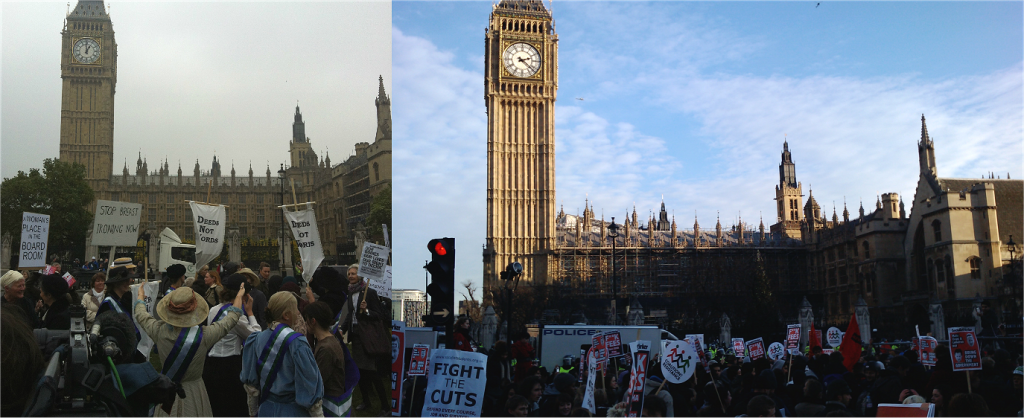On Sunday, the Guardian published an article reporting that “Dr Richard Curtis is under investigation following complaints over treatment of patients seeking gender reassignment”. Zoe O’Connell offers important context and I urge anyone who reads the Guardian article to also read her response.
Mainstream media pounces on anything with a whiff of malpractice or trans regret but I don’t think I’ve ever seen an article in the mainstream media about the everyday struggles trans* people experience in trying to access care. Sarah Brown playfully demonstrated how eager the media is for stories about trans regret by referring to an operation she regretted – unfortunately for the newspaper that phoned her within minutes of her tweets, the operation in question was on her hand.
Stories framed as “trans regret” are not harmless, but are used to deny trans* people necessary treatment. Trans* people must undergo months and years of psychological assessment and “Real Life Experience” tests (without hormones or surgery, thus placing them at risk of transphobic abuse and attacks) to test if they really want to transition. It is apparently better to make thousands of trans* people suffer than to allow a consenting but mistaken cis person access to hormones and surgery.
On Tuesday, Sarah Brown highlighted this discrepency in media attention and urged trans* people to tweet about their experiences using the #TransDocFail hashtag. The response was incredible – thousands of tweets and hundreds of participants – but the stories were depressingly similar. Zoe has collected the lowlights, grouping them under the headings “The NHS doesn’t do that!” (GPs’ insistence that specifically trans* care is not offered by the NHS), “The long wait”, “At least delays are not outright refusal to give treatment or right letters”, “The Transsexual broken arm” (every medical condition will be related to your gender), “Pointless abuse”, “Doctor knows best”, “Administrative errors and misgendering”, “Jumping through hoops” and “Non-binary genders don’t exist”. There are clear patterns to this data – at best, medical professionals are ignorant of trans* issues, at a bit worse they directly and deliberately put obstacles in the way trans* people’s attempts to find health and happiness, and at their very worst they abuse people both physically and mentally.
The following comment pieces have been published:
New Statesmen: As the #transdocfail hashtag showed, many trans people are afraid of their doctors
Guardian: The real trans scandal is not the failings of one doctor but cruelty by many
On the same Tuesday, Suzanne Moore’s piece on female anger was published on the New Statesman. It included the observation that
We are angry with ourselves for not being happier, not being loved properly and not having the ideal body shape – that of a Brazilian transsexual.
This observation is all the more crass for the sheer number of Brazilian trans people who are murdered each year. As this articles notes,
On the last Transgender Day of Remembrance, out of the 265 reported cases of murdered trans people between 15th November 2011 and 14th November 2012, 126 of them were from Brazil.
Moore’s response on twitter was shameful: among other things, she declared that transphobia and Islamophobia simply did not exist, stated that she doesn’t “prioritise this fucking lopping bits of your body over all else that is happening to women” and that “People can just fuck off really. Cut their dicks off and be more feminist than me”. She then followed this twitter rant with a Guardian comment piece. Stavvers has an excellent response, as does leftytgirl.
Bear in mind that Moore’s twitter rant was concurrent with #TransDocFail. Had she wanted, she could have easily found tales of horrifying medical abuse perpetuated against women.
What I find so interesting about this is how difficult it is to publish things that don’t fit a desired media narrative of trans* experiences, but how apparently easy it is to publish problematic things if you’re a noted feminist. There’s a lot to say here about access to platforms – Suzanne Moore, as an established writer, has built up a network of contacts which many trans* people don’t have. She can pitch things to them, or is invited to comment on issues or write response pieces.
However, there is something else going on here. Trans* writers and journalists have pitched articles on the difficulties of accessing treatment. It is something that clearly affects a lot of people, perhaps everyone who has been under the care of a Gender Identity Clinic. If this was happening in another NHS department there’d be outrage – not just that treatment is inadequate, but that gatekeeping is built into the system and the patient is forced to prove that they want the treatment enough before it is offered to them. And yet this goes unreported. Instead, what are the media narratives of trans* people? This is something I hope to explore in my next research project, but a quick survey of the articles @TransMediaWatch links to, I’d suggest that as well as medical malpractice, there’s interest in personal, “unusual” transitions. I pulled the two most recent transition-related stories from @TransMediaWatch’s timeline and they’re pretty typical:
Dame of two halves: I was a 24-stone football hooligan but now I’m going to be a woman
‘Having Harry Styles as a role model has helped’: Transgender girl reveals on This Morning why she wants surgery on NHS to look like One Direction star
Note how, in the last article, the person is referred to as a “transgender girl” and the article consistently uses the wrong pronouns. Best is presented as being superficial and transitioning only to resemble a pop singer when his quoted speech suggests something different. In both, the individual is foregrounded and their current situation is emphasised. Focus on the individual, not the system. Focus on the surgery, not the hoops jumped to get it. Focus on surgery as the moment when you “become a woman” rather than the years spent worrying, thinking, shifting, unfurling yourself within a wrong, alien body. This difficult, lengthy process and a system that gatekeeps and denies is not a news story and the media does not, apparently, want to hear it.
As I write this on Friday afternoon, “the Left” is busily shutting down valid criticism of Moore’s transphobia – another reminder that there are some experiences that no one, apparently, wants to hear.


